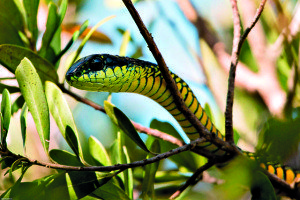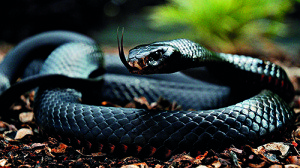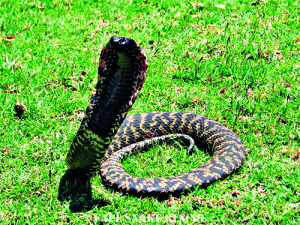Snakes On A Trail
When a serpent slithers its way between you and the singletrack – what do you do?
When a serpent slithers its way between you and the singletrack – what do you do? – By André Valentine
Never mind the steep, rocky, gnarly descents, or that technical drop-off for some reason called ‘Widowmaker’ – what really scares mountain bikers is encountering fanged fiends on the trail. But the veld and mountains are a snake’s natural habitat, and we’re just guests. According to Arno Naudé, snake expert and chairman of the Transvaal Herpetological Association, venomous snakes are everywhere.
“When you’re riding, you move so fast that the snake doesn’t have time to move out of the way,” says Naudé. “It gets startled – and when it’s startled, it strikes.”
Most times, it won’t get you; but as a general precaution, Naudé says, “If you’re heading straight for a snake and can’t get out of the way, make sure you lift your feet as high as possible – and then once you’re over, ride like hell.”
Here are a few more reptile-related tips that could save your life:
1 Don’t Turn Back
If you’ve ridden over a snake, Naudé suggests, just carry on. “At high speeds, bikes are too light to cause permanent damage to snakes, so it should still be fine.” Besides, after being ridden over, the snake may be “injured, pissed off, and looking for you”.
2 Stay Alive At 2.5
If you have enough space – roughly 2.5 metres – then go around the snake, says Grant Smith, founder of Cape Snake Conservation. “The most important thing is not to startle it. Snakes are attracted to movement; so if you move suddenly, or too fast, it could attack.”
3 Take The Back Door
Smith suggests that when passing a snake, it’s best to do so going behind it. He says that when a snake is headed in a particular direction it is steadfast on its mission, and doesn’t care what’s behind it. Just remember not to startle it as you pass.
3 Abandon Ship
If a snake gets caught in your spokes, don’t try to remove it – even if it looks mangled. A snake can live for a long time without oxygen, says Naudé, so it could still be alive – and able to strike – after the head has been severed.
4 Ride And Die
Both Naudé and Smith say that if you’re bitten, do not ride away. Exercise elevates your heart rate, and spreads the venom more quickly. It’s important to keep calm, keep your heart rate down, and contact emergency services, who should get you to a hospital ASAP. “Have your ICE information on hand – this is the sort of situation where it becomes important,” says Smith.
[box]
The Sharp End
Snakes may have two types of venom:
Cytotoxic: Attacks the tissue of the bite area, eating away at it and potentially causing muscle weakness.
Neurotoxic: Attacks the brain and nervous system, which causes
seizures and can result in death. [/box]
5 Tie It Down
Tie a tourniquet above the wound (between the wound and the heart), to prevent the venom from spreading quickly. “This will buy you time until help arrives,” says Level Five paramedic Lee-Ann Bedwell.
6 Who You Gonna Call?
Snake catchers can’t remove snakes from trails, but they can still help you. If you’ve been bitten, identifying the species is crucial, says Bedwell, because this will help doctors administer the correct antivenom. Contact a snake expert ASAP – here are a few in key areas:
Western Cape, Grant Smith: 084 328 1001;
Gauteng, Arno Naudé: 083 739 9303; and KZN, Byron Zimmerman: 082 894 6783.
[box]
The Danger Factor
Puff Adder
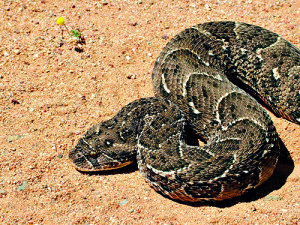
A medium-length, patterned, thick-bodied snake that’s sluggish, but moves with speed and aggression when threatened.
Found: Throughout southern Africa
Venomosity (no, it’s not a real word): Highly cytotoxic. Though not the most venomous snakes, puffies are responsible for the most snakebite fatalities in Africa. Venom can cause swelling that will paralyse a limb.
Boomslang
A reclusive green (females are brown) snake that flees anything too large to eat. It has a long tail, is good at climbing trees, and has extremely good eyesight.
Found: Throughout southern Africa, except the Karoo, Namaqualand and Western Cape.
Venomosity: Venom is high in haemotoxins, which stop blood clotting and cause death by internal or external bleeding. It’s slow-acting, and symptoms present as neurotoxic (headache, nausea, sleepiness and mental disorder).
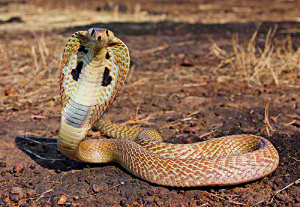
Cape Cobra
A medium-sized yellow/gold/brown snake that moves quickly and is highly alert. Calmer than most, but will strike when threatened.
Found: Cape, Free State, North West
Venomosity: This is Africa’s most dangerous cobra. Venom is neurotoxic, and can cause death within one to 10 hours after a bite, due to respiratory failure because of paralysis.
Black Mamba
A fast-moving olive-brown to grey snake (‘black’ refers to the inside of its mouth), related to the cobra. Generally afraid of humans, and will run away if confronted.
Found: Eastern Cape, KwaZulu-Natal, Gauteng.
Venomosity: The venom is neurotoxic, and highly potent. Can cause a human to collapse in 45 minutes.
Rinkhals
A short snake that varies in colour. Similar to a cobra, but scales are ridged and keel-like; can spit its venom up to 2.5m.
Found: Southern Cape, Transkei, Lesotho, Free State, KZN, Gauteng.
Venomosity: The Rinkhals has both neurotoxic and cytotoxic venom. It spits its venom at the eyes, which is extremely painful. [/box]
READ MORE ON: Skills training programmes workouts



